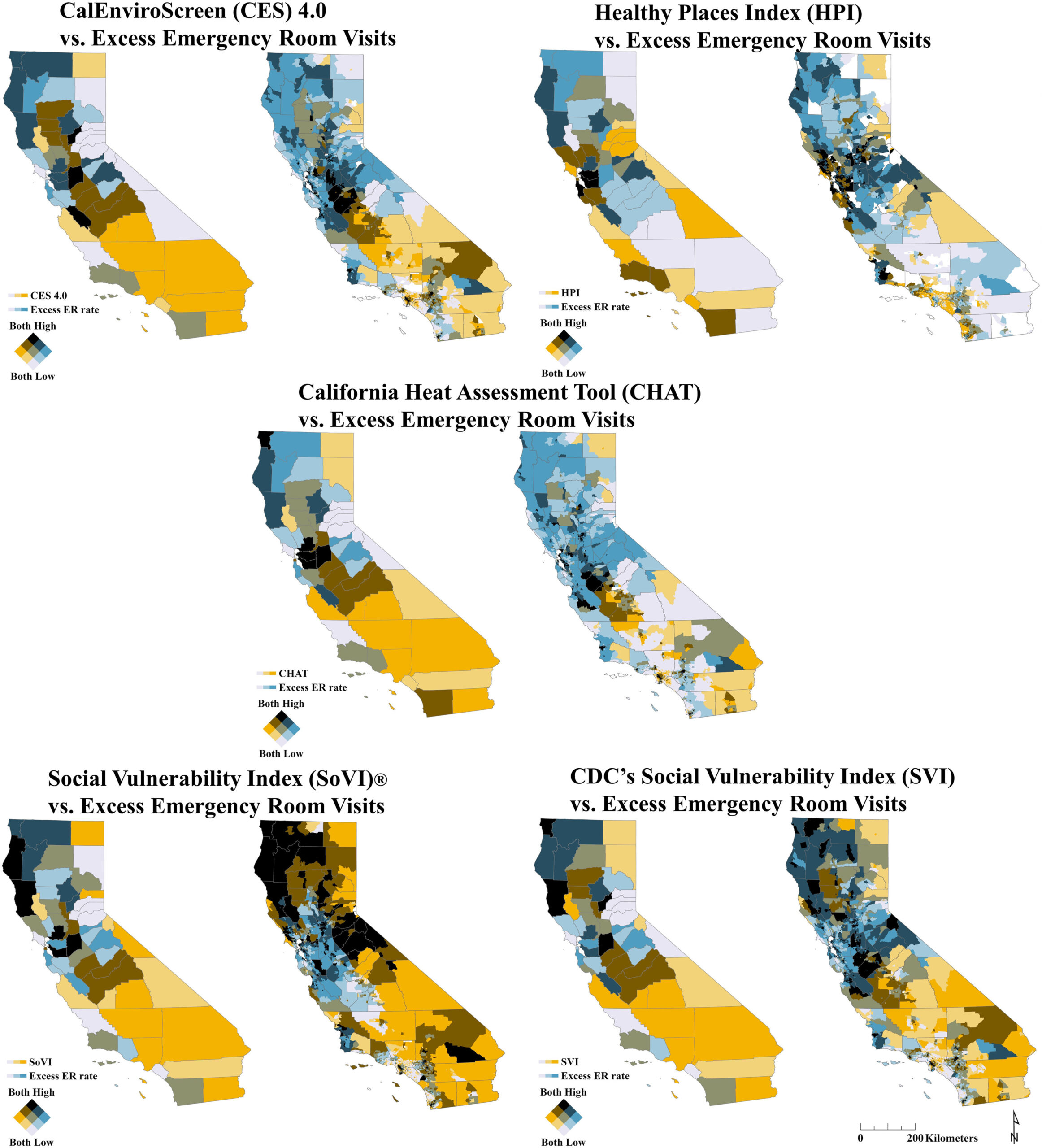Do social vulnerability indices correlate with extreme heat health outcomes?
Year: 2024
Published in: The Journal of Climate Change and Health

Several frameworks exist to measure vulnerability to extreme heat events using a health equity approach, but little evidence validates these measures and their applications. We investigated the degree to which social vulnerability measures and their constituent elements correlate with excess emergency room visits as an outcome measure. The relationship between six commonly used social vulnerability indicators and measured excess emergency room visit rates (processed by including heat-related illnesses and all-internal causes diagnosis, with considerations for age and heat days) was tested through geospatial analytics and statistical regressions, for both California and Los Angeles County. The vulnerability indicators and the outcome measure were significantly positively associated at the census tract-level but weaker (»0.2 rs) at the scale of California and stronger (»0.6 rs) at the scale of Los Angeles County. Hazard- specific vulnerability indicators showed stronger relationships with outcome measures regardless of scale. A Poisson regression model showed a significant inter-county variation, indicating the importance of localized assessments for equitable environmental policies. The findings identify communities that are overburdened by heat and pollution and highlight the need for use of both social vulnerability and indicators of adverse outcomes from excessive heat. Patterns are found across all measures that suggest that popula- tions facing accessibility barriers may be less likely to visit emergency rooms. This suggestion needs to be tested in other environmental settings to draw broader conclusions but has direct implications for environ- mental scientists and mitigation planners who use these methods.